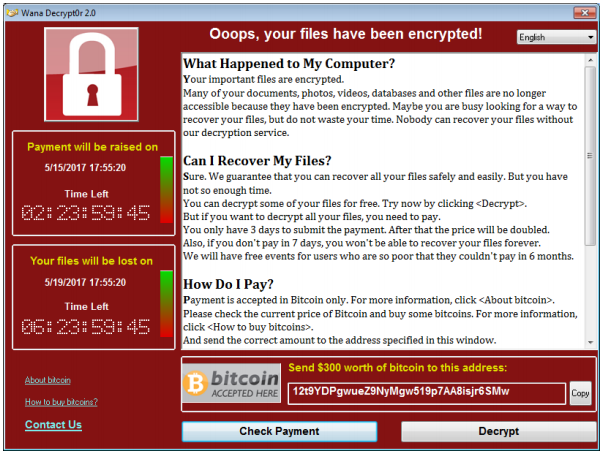

Information on Ransomware.
What do I do if I get a Ramsomware message?
If you receive a Ransomware notification on your computer, please power down the device and contact the Cyber Incident line immediately 01 - 700 7990.
Advice on avoiding Ransomware
- Avoid opening any attachment emailed to you that you were not expecting or can not be verified from a known source.
- Watch out for emails with attachments suggesting you must reply quickly or 'act fast' to make you feel compelled to open the attachment quickly - without considering the source.
- It’s essential to check the content of the messages you receive by email. Attachments have become a widespread method for propagating malware, which is one of the main means of infection by ransomware.
What is Ransomware?
Ransomware is a Malware/Virus that stops you from using your computer. It holds your computer or files for ransom. Ransomware can make its way onto a system through various means, with the victim ultimately downloading and installing a malicious application.
Once on the device, the malicious application will spread throughout the system and encrypt files on the hard drive or simply lock the system itself. In some cases, it may block access to the system by displaying images or a message across the device’s screen to persuade the user to pay the malware operator a ransom for the encryption key to unlock the files or system.
What does it look like and how does it work?
There are different types of ransomware, however all of them will prevent you from using your computer normally and they will all ask you to do something before you can use it again.
They can:
- Prevent you from accessing Windows.
- Encrypt files so you can't use them.
- Stop certain apps from running (like your web browser).
They will demand that you do something to get access to your PC or files.
- Demand you pay money.
- Make you complete surveys.
- There is no guarantee that paying the fine or doing what the ransomware tells you will give access to your PC or files again.

